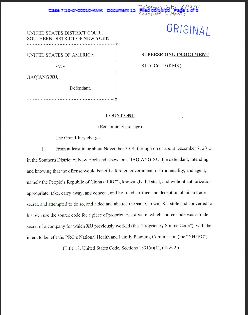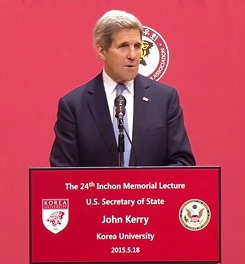Earlier this year, the Electronic Privacy Center (EPIC) filed a Freedom of Information Act (FOIA) request to obtain Department of Homeland Security (DHS) documents related to Standard Operating Procedure 303 (SOP 303).
Basically, SOP 303 authorizes the shutdown of wireless networks in emergencies to prevent remote detonation of explosive devices. The “Internet kill switch” framework, as it has been called, is, more specifically, an “Emergency Wireless Protocol[] . . . codifying a shutdown and restoration process for use by commercial and private wireless networks during national crisis” in order to “deter the triggering of radio-activated improvised explosive devices.”
DHS provided SOP 303; however, it withheld substantial portions of the documents pursuant to a number of claimed FOIA exemptions. EPIC filed suit in the United States District Court for the District of Columbia seeking an order mandating the release of the withheld portions (EPIC v. DHS).
DHS argued that it properly withheld the bulk of SOP 303 under FOIA Exemptions 7(E) and 7(F). EPIC argued that the exemptions upon which DHS relied were not applicable. Ultimately, the Court issued a contemporaneous order granting summary judgment in EPIC’s favor and ordering DHS to turn over SOP 303 within 30 days. (The Court sustained certain redactions related only to FOIA Exemptions 6 and 7(C)).
Here, I provide an analysis of the Court’s treatment and interpretation of FOIA exemption 7(E). Tomorrow I will take a look at Exemption 7(F).
Exemption 7(E) permits the government to withhold “records or information compiled for law enforcement purposes, but only to the extent that the production of such law enforcement records or information . . . would disclose techniques and procedures for law enforcement investigations or prosecutions.” To comply with this standard, an agency must show: (1) that the record was compiled for law enforcement purposes, and (2) that the production would disclose techniques and procedures for law enforcement investigations.
Although the Court found that DHS satisfied the first prong of the test because steps taken to prevent terrorism are clearly a “law enforcement purpose,” they found DHS failed the second prong.
In determining whether the agency sufficiently demonstrated how SOP 303, which is technically an articulation of protective measures, is also a technique or procedure for law enforcement investigations or prosecutions, the Court looked to the legislative history of FOIA, the natural meaning of the language used in the Act, and Justice Alito’s concurrence in Milner v. Dep’t of Navy. (131 S. Ct. 1259 (2011)).
The Court ultimately agreed with the government “that Exemption 7’s mention of ‘law enforcement purposes’ may certainly include preventive measures.” However, the Court found that the Exemption’s reference to “law enforcement investigations and prosecutions” did not include preventive measures. Therefore, Exemption 7(E) did not exempt the withheld portions of SOP 303.
Like I mentioned, tomorrow’s post will give you a brief summary of the Court’s treatment of Exemption 7(F). For now, you can take a look at the full opinion here.







Leave a Reply